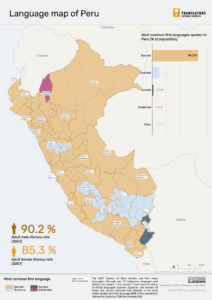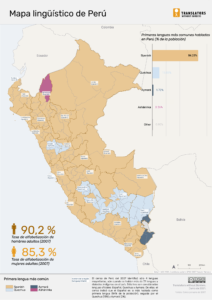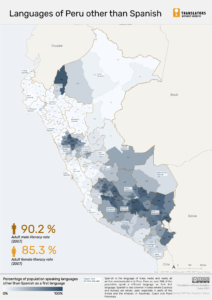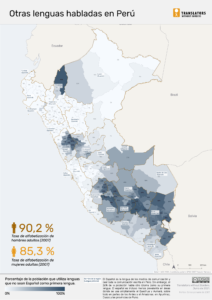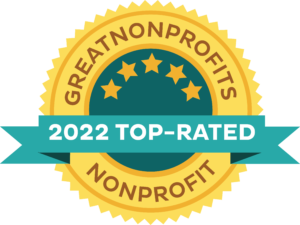The 2007 Census of Peru records just four major languages, although over 72 Indigenous languages and dialects are spoken in the country. Around 84% of Peruvians speak Spanish, the official national language. Even so, over 26% of the population speaks a first language other than Spanish. Quechua is the second most commonly spoken language (13%), followed by Aymara (2%), and both have official status. In urban areas of the country, especially the coastal region, most people are monolingual and only speak Spanish. Indigenous languages are spoken at higher rates in rural areas.
Indigenous languages of Peru are primarily located in the central Andes, in the south near the border with Bolivia, and the Amazon rainforest, in the north near the border with Ecuador. In the Andes these are primarily Quechua, Aymara, Jaqaru, and Kawki. Residents of the Amazon region, meanwhile, speak a large number of Indigenous languages, the most common of which are Asháninka and Aguaruna. More than 105,000 people speak Indigenous languages other than Quechua and Aymara, mostly in the east and north of the country, in Loreto, Madre de Dios, and Ucayali regions.
The literacy rate in Peru for 2018 was 94.41%, a 0.26% increase from 2017. Literacy rates are lower in rural areas (80.3%) than in urban areas (96.3%), and markedly lower for women than men.
Explore the data by province here.
These maps and datasets are published with funding from the World Food Programme.
Curated datasets
Available on Humanitarian Data Exchange (HDX)
For more information, please contact maps@translatorswithoutborders.org
Maps and resources:
Peru Languages Map: Static (EN)
Static map highlighting the most common languages spoken in Peru. Data is from the 2007 census.
Peru Languages Map: Static (ES)
Static map highlighting the most common languages spoken in Peru. Data is from the 2007 census.
Languages other than Spanish in Peru Map: Static (EN)
Static map highlighting the places where languages other than Spanish are used the most in Peru. Data is from the 2007 census.
Languages other than Spanish in Peru Map: Static (ES)
Static map highlighting the places where languages other than Spanish are used the most in Peru. Data is from the 2007 census.
Languages of Peru: Interactive (EN)
Interactive map showing the number of speakers and geographic spread of different languages in Peru. Data is from the 2007 census.
